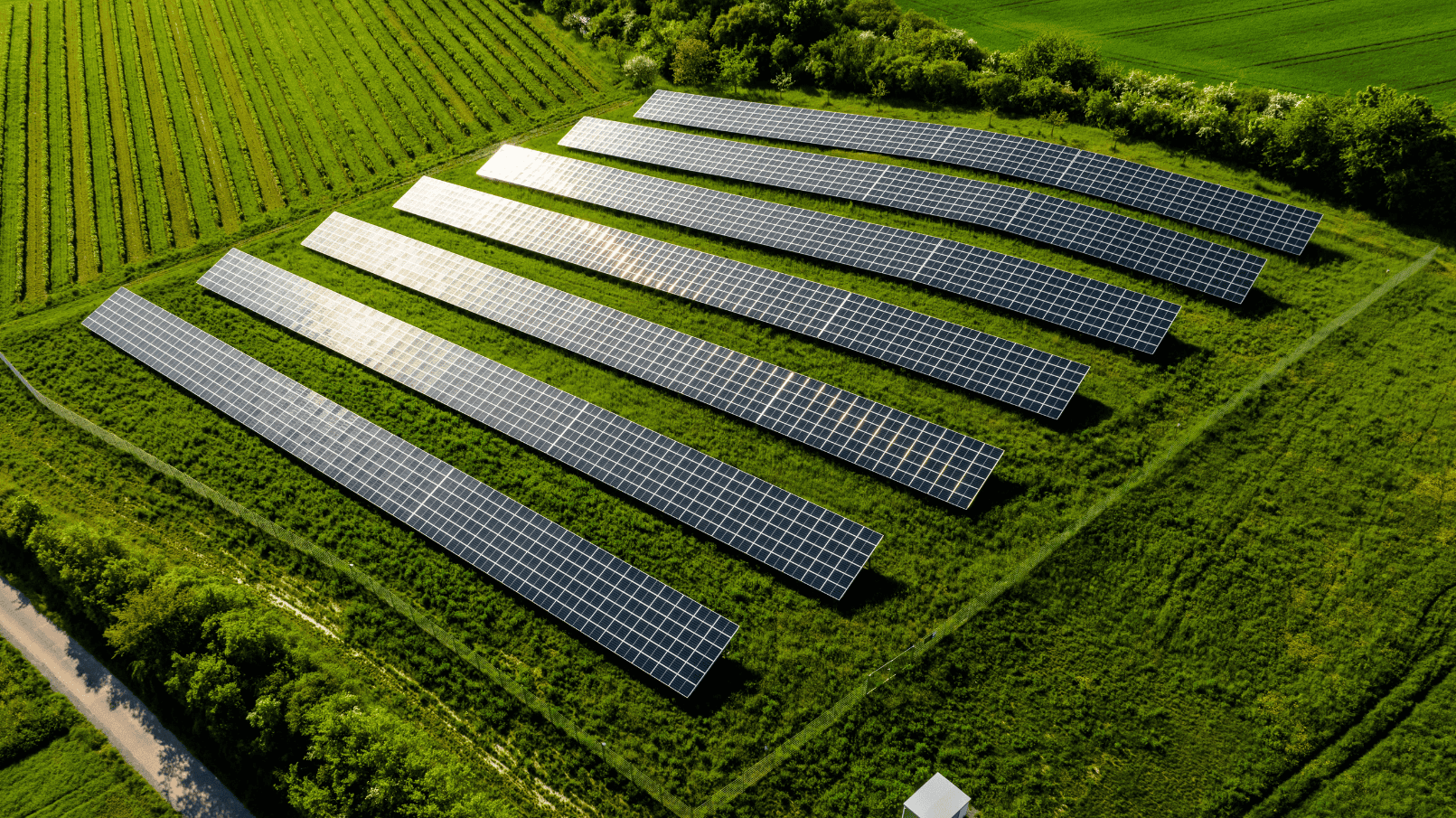The transition to renewable energy is accelerating and reshaping both the U.S. and global energy markets. Solar power has emerged as a driving force in this transformation, offering clean, sustainable energy while presenting significant opportunities for solar developers and landowners alike. Understanding these renewable energy trends and projections is key for tapping into opportunities and taking advantage of these U.S. renewable energy projections 2050. Let’s explore the future outlook of solar renewable energy in more detail.
Renewable Energy In The U.S.
U.S. renewable energy growth is gaining momentum, accounting for 81% of new electric generating capacity in 2024, according to the Energy Information Administration (EIA) (see chart below). This growth is fueled by increasing investments in solar and wind power, declining installation costs, and supportive government policies. The Inflation Reduction Act of 2022, for instance, has provided substantial tax incentives for renewable energy projects. Solar projects, in particular, are on the rise, with the Solar Energy Industries Association (SEIA) projecting the U.S. will add more than 30 GW of solar capacity annually by 2029.

Some of this growth is being driven by utility-grade solar generation, which powers RTO/ISO systems and community solar projects. As evidenced by the EIA chart below, utility-scale solar generation superseded 2023 numbers by 36% on average in the lower 48.

In the second half of 2024, new U.S. solar electricity generating capacity made up approximately 63% of new generating assets in the United States, fueled by utility-scale developers adding nearly 24 GW of solar capacity. The chart below from The University of Michigan’s Center for Sustainable Systems illustrates U.S. renewable energy percentage by year:

As U.S. renewable energy projections continue to grow, the global outlook is taking on a similar shape. Let’s explore projected renewable energy growth across the globe in more detail below.
Global Overview
Many are wondering when will renewables overtake fossil fuels as the world’s dominant energy source. Globally, renewable energy is making significant strides, with leading nations like China and the EU investing heavily in solar and wind. According to SEIA, solar power alone is expected to account for 60% of new electricity capacity added worldwide by 2030. International energy alliances such as the Paris Agreement, and advancements in battery storage technology, are accelerating this shift. According to the IEA, global renewable power generation is forecasted to reach 17,000 TWh by 2030. That would represent a total increase of 90% from 2023 levels.
What percentage of the world’s energy is renewable?
Today, nearly 30% of the world’s electricity generation comes from renewable energy sources. A significant rise from just 18% at the turn of the 21st century. See the chart below compiled by Ember representing growth in wind and solar generation since 2000:

How do you see energy in the future?
As renewable energy production continues to increase due to climate concerns, government incentives, and efficiency, our future outlook is promising. We predict the following over the next few years:
- 2025: renewable power generation supersedes coal-fired power plants.
- 2026: wind and solar generation surpass nuclear.
- 2028: solar generation becomes the dominant renewable energy source.
- 2030: renewables supply for half of global electricity demand.
Renewable Energy Projections 2024–2050
The U.S. Could Reach 25% Of Its Energy From Renewables by 2030
Wind, solar, and hydro production currently account for about 20% of all U.S. electricity production. Projections from the EIA suggest that the U.S. could achieve 25% renewable energy generation as early as 2030, driven largely by solar development projects.
Renewable Energy Provided 21% Of The Country’s Total In 2024
Up from levels around 18% in 2000, this milestone underscores the steady progress of renewable energy in the U.S., setting the stage for future growth. As solar generation is projected to surpass wind in the near future, the nation could achieve 1/4th of its energy production from renewable sources sooner than projected.
Continued Growth In Solar And Wind Power
Solar power is projected to remain the fastest-growing source of electricity, with cumulative capacity exceeding 400 GW by 2050. Current levels are at approximately 300 GW including wind, solar, and hydroelectric.
Natural Gas Continues To Be The Largest Source Of Energy
While natural gas remains a key energy source, renewables are expected to surpass fossil fuels as the dominant energy provider by mid-century. Natural gas has become the “cleaner” alternative to coal-fired electricity generation, although it remains with its own controversies. In 2023, natural gas accounted for 43% of U.S. power generation, compared to 16% coal generation.
Coal-Generated Electricity On The Decline
The share of coal-fired power is projected to drop to less than 10% by 2050, replaced by cleaner energy alternatives like solar and wind. Coal accounted for 16.1% of electricity generation in the U.S. in 2023, down from 38.6% in 2014 and 51% in 2001.
Increase In Distributed Energy Resources
In order to efficiently integrate renewables into the electric system, more distributed energy resources are required to supply local communities and businesses. These systems are decentralized and allow wind and solar to directly power consumers without the need for central electric grid communications systems. DERs are needed as the existing electrical transmission infrastructure cannot handle a significant amount of new generating capacity.
Batteries To Become The Star
Battery energy storage systems (BESS) are rapidly becoming a key component of modern electric systems. Because solar and wind generation is dependent on external factors (the sun and the wind), they are intermittent in nature and require backup sources. Furthermore, some electric grid systems cannot handle excess energy generation from solar projects during peak hours. Batteries coupled with PV systems allow the excess energy to be stored and used later. This enhances the financial viability of these projects and further promotes grid reliability.
By 2050: What Is The Target Of Renewable Energy?
Experts believe the U.S. could achieve 80% renewable energy by 2050, but technical and economic barriers may prevent a full transition to 100% renewables. These barriers include the current centralized power grid, as well as high costs for batteries, which are necessary to build efficient solar systems.
What These Trends Mean For The Future Of Solar Energy
These trends firmly position solar power as a cornerstone of the renewable energy future. Advancements in technology, such as bifacial solar panels and improved energy storage systems, are increasing efficiency and reducing costs. Grid integration solutions, like virtual power plants (VPPs), remote terminal units (RTUs), and SKADA communication protocols, are enabling better management of distributed energy resources by system operators.
Furthermore, the growing demand for community solar reflects a shift toward shared energy solutions, making solar accessible to more consumers and businesses. All of these components are promoting a cleaner future where solar energy will continue to be the leader in renewable energy generation.
The Renewable Future For Landowners, Communities, And Solar Investors
As these trends continue to transform our energy economy, there are many benefits for those participating in the renewable energy market. Collaboration between landowners, utility companies, and solar developers is needed to help this vision come to life. Let’s explore the future of renewable energy for each market participant.
Landowners
Landowners have a unique opportunity to lease their unused property for solar projects, allowing them to earn consistent, long-term income. Ideal sites are 10+ acres with high sun exposure and proximity to three-phase power infrastructure. Furthermore, local zoning and permitting play a role, allowing projects to be built faster in solar-friendly areas. Landowners who are looking to participate in the renewable energy market can do so by partnering with solar developers who are building generation assets. By partnering with experienced developers like Genie Solar Energy, landowners can rest assured knowing they will have a seamless experience and be able to maximize the value of their land.
Communities
Community solar projects bring affordable, clean energy to local communities, reducing electricity costs and promoting sustainability. Community solar legislation allows developers to build solar farms and sell the electricity to local homeowners and businesses through their utility bills. Landowners hosting solar farms also stimulate local economies through job creation and infrastructure development, benefiting both residents and businesses. As new states begin to introduce community solar legislation, it allows consumers who cannot install rooftop solar to participate in renewable energy.
Solar Investors
Solar developments represent a lucrative investment opportunity, offering consistent returns through energy sales and tax benefits. While these projects are complex and often take years to get approved and built, they allow renewable energy investors to generate long-term, recurring revenue. In addition, there are many state incentives, such as SRECs, that allow investors to monetize the renewable value of their projects. It is important for investors to partner with trusted solar developers such as Genie Solar Energy to ensure success in their solar investments.
Why Partner With Genie Solar Energy
Genie Solar Energy is a trusted leader in solar land leasing, community solar projects, and utility-scale solar development. Backed by the stability of a publicly traded company, Genie offers transparent processes, expert guidance, and a proven track record of success. Contact our team of solar experts today for a free land consultation and discover how your property can become a vital part of the renewable energy future. Let us help you turn your land into a sustainable source of income while contributing to a cleaner, greener world.

















